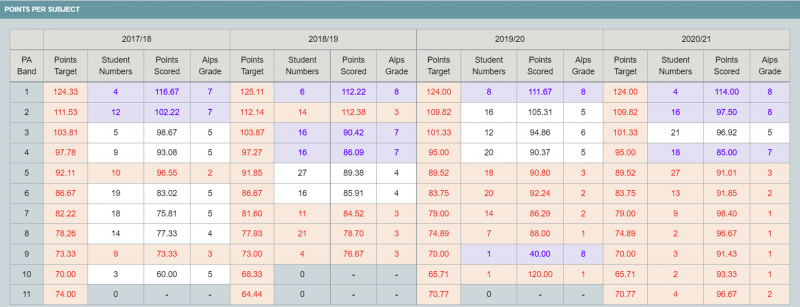Effective use of data to inform Curriculum Development
In recent years there has been a welcome emphasis on the central role of the curriculum in determining the quality of education within our schools and colleges. As we emerge from the pandemic, our understanding of the curriculum in terms of its intent, implementation and impact will be critical to the shaping of both the short term ‘recovery curriculum’ but also longer–term curriculum plans.
In the short term, as we focus on the ‘recovery curriculum’, colleagues in the classroom will have been assessing their students’ understanding of course content through a range of ‘low-stakes’ assessments. Now, as we move to the end of this autumn term, many schools and colleges will be introducing more formal assessments. Effective analysis of this assessment data will enable school leaders to identify the progress made by key groups of students across their curriculum and consider, where possible, the implementation of curriculum adjustments, intervention and catch–up programmes.
In addition to these vital, reactive, shorter-term plans it is important not to lose sight of the longer-term progress trends for particular groups of students that may be ‘built-in’ to our curriculum. When considering the long-term development of curriculum models, it is critical that we have a clear understanding of how our current model ‘works’ both from a subject perspective and also in terms of different student groups, for example disadvantaged, SEND, gender or prior attainment groups. This understanding can be informed by a range of evidence sources, but analysis of outcome data in terms of both attainment and progress is critical.
There is a powerful tool within the Alps Connect platform we can use to identify areas of strength or areas for development across curriculum models called the Banded by Prior Attainment (BBPA) analysis. This analysis focuses on the progress made by students in eleven separate prior attainment bands and can be applied to the whole cohort as well as to specific student groups, for example, disadvantaged students.

As a reminder, in Alps analysis, our colour coding works so that red means ‘red hot’, i.e. meeting or exceeding the achievement of the top 25%, black means hitting the same performance as the middle 50% and blue means ‘cold’, only meeting or performing lower than the performance of the bottom 25%, against national benchmarks. The example above is an analysis of a whole cohort and is the type of pattern we see in a number of schools and colleges. The analysis indicates that for this cohort, the outcomes for students are higher in the mid to lower prior attainment bands (they are predominantly red) compared to those students in the higher prior attainment bands (they are predominantly blue). The analysis also highlights that this is a pattern that has been ‘repeated’ across a number of years.
From a school leader’s perspective, this type of analysis can pose several questions which may have potential implications for both curriculum intent and implementation. When considering this type of data, it is easy to focus first on the areas for improvement, but it is also important to consider why outcomes are higher for students in the mid and lower attainment groups. Clearly, there will be a few potential explanations for this depending on the context, but, interestingly, colleagues in schools will often describe planned programmes within their sixth form provision which are aimed at developing study skills, as being a particularly important factor in the success of students from lower prior attainment groups.
When considering the lower outcomes for the students from higher prior attainment bands this data will present a separate set of questions:
- Are colleagues setting sufficiently ambitious targets for these students?
- Is this pattern reflected across all subject areas?
- Is the intent at subject level sufficiently robust?
- Is the curriculum being implemented effectively?
Ultimately, whether we are considering either short term or longer-term priorities, or both, the importance of understanding how the outcomes of students are linked to our curriculum will be key in driving the nature of the improvement strategies we implement. Some of these strategies may only be required in the short term as part of the recovery agenda, however, where ‘gaps’ are more deeply embedded within our system, these will require a more fundamental change to how we construct and implement our curriculum models.
If you are interested in finding out more about Alps we would be delighted to hear from you – you can email us at [email protected] or visit our website at www.alps.education
Need more information?
If you would like any further information, please contact one of our expert advisers.


